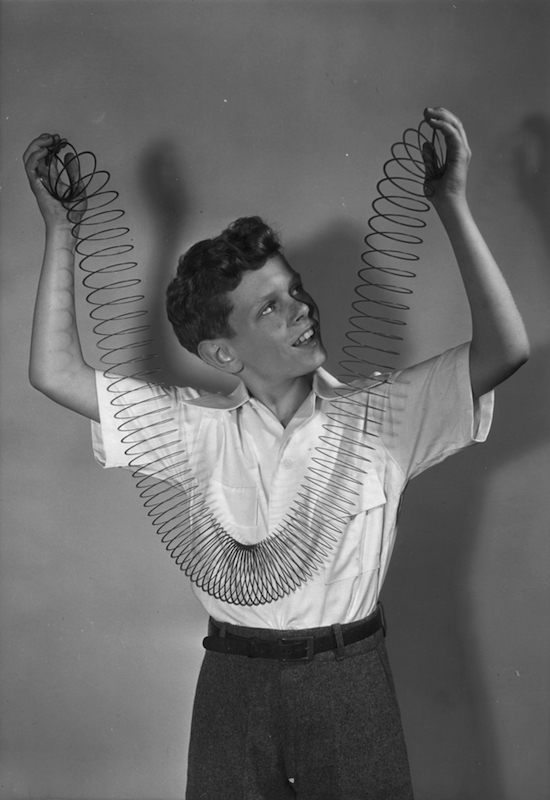
It was exactly 70 years ago, on the evening of Nov. 27, 1945, that Richard James demonstrated a new product at Gimbels department store in Philadelphia. It was the Slinky, and it was a hit: He sold out the 400 he had, at $1 each, in 90 minutes. By the end of the 1945 holiday season 22,000 Slinkys had been sold.
It was the pivotal moment in the history of a toy that, as James would later tell a reporter, “the toy people wanted no part of.”
The Slinky was actually invented years earlier, in 1943, when James was a mechanical engineer in a Philadelphia shipyard. As TIME’s list of the All-TIME 100 Greatest Toys later explained, the toy “was the unintended by-product of a new line of sensitive springs that would help keep fragile equipment steady on ships. After knocking one of his newly created springs from a shelf, James watched as it ‘walked’ down from its spot instead of falling to the ground.” After this accidental discovery, James developed the idea throughout the next two years.
The original Slinky was 2.5 in. tall with 75 ft. of high carbon steel wire arranged in 98 coils. James filed a patent for the toy the same month of its first demonstration, and it was approved in January of 1947. Despite initial retailer reluctance, the Slinky soon found its market and James quit his job to devote all his time to the project.
Still, the Slinky was not a one-man operation.
It was Richard James’ wife, Betty James, who in 1944 came up with the name for the toy by looking through the dictionary, choosing it “because she thought it best described the sinuous and graceful movement and the soft sound of the expanding and contracting metal coil her husband, Richard, had fashioned,” per the New York Times. Betty James was also the one responsible for the toy’s jingle, as TIME’s obituary of her noted: “What walks downstairs alone or in pairs/ And makes a slinkity sound?/ A spring, a spring, a marvelous thing/ Ev’ryone knows it’s Slinky!’”
After Richard James left his family in 1960 to move to Bolivia to join a religious sect, his wife took over as CEO and re-energized the company, which he had gotten deeply into debt. She continued to helm the company until 1998, when she sold it to Poof Products.
All these decades later, the toy’s popularity has persisted, resulting in sales of more than 300 million Slinkys. It has been inducted into the National Toy Hall of Fame and is part of MoMA’s Architecture and Design collection.
More Must-Reads from TIME
- Donald Trump Is TIME's 2024 Person of the Year
- Why We Chose Trump as Person of the Year
- Is Intermittent Fasting Good or Bad for You?
- The 100 Must-Read Books of 2024
- The 20 Best Christmas TV Episodes
- Column: If Optimism Feels Ridiculous Now, Try Hope
- The Future of Climate Action Is Trade Policy
- Merle Bombardieri Is Helping People Make the Baby Decision
Contact us at letters@time.com